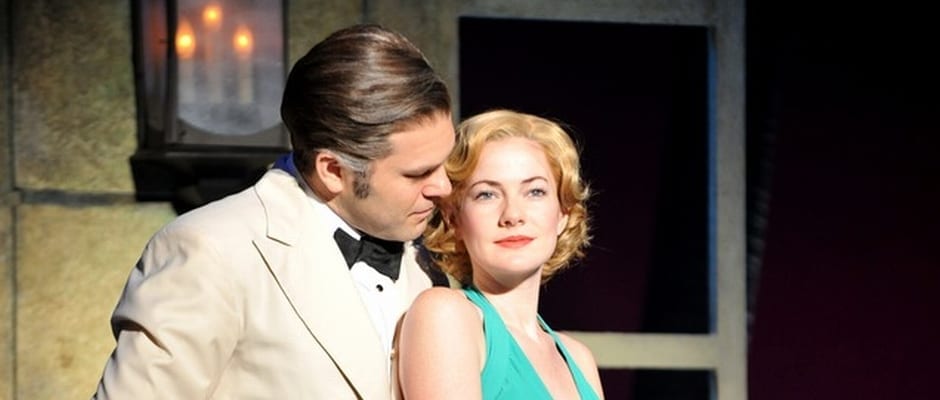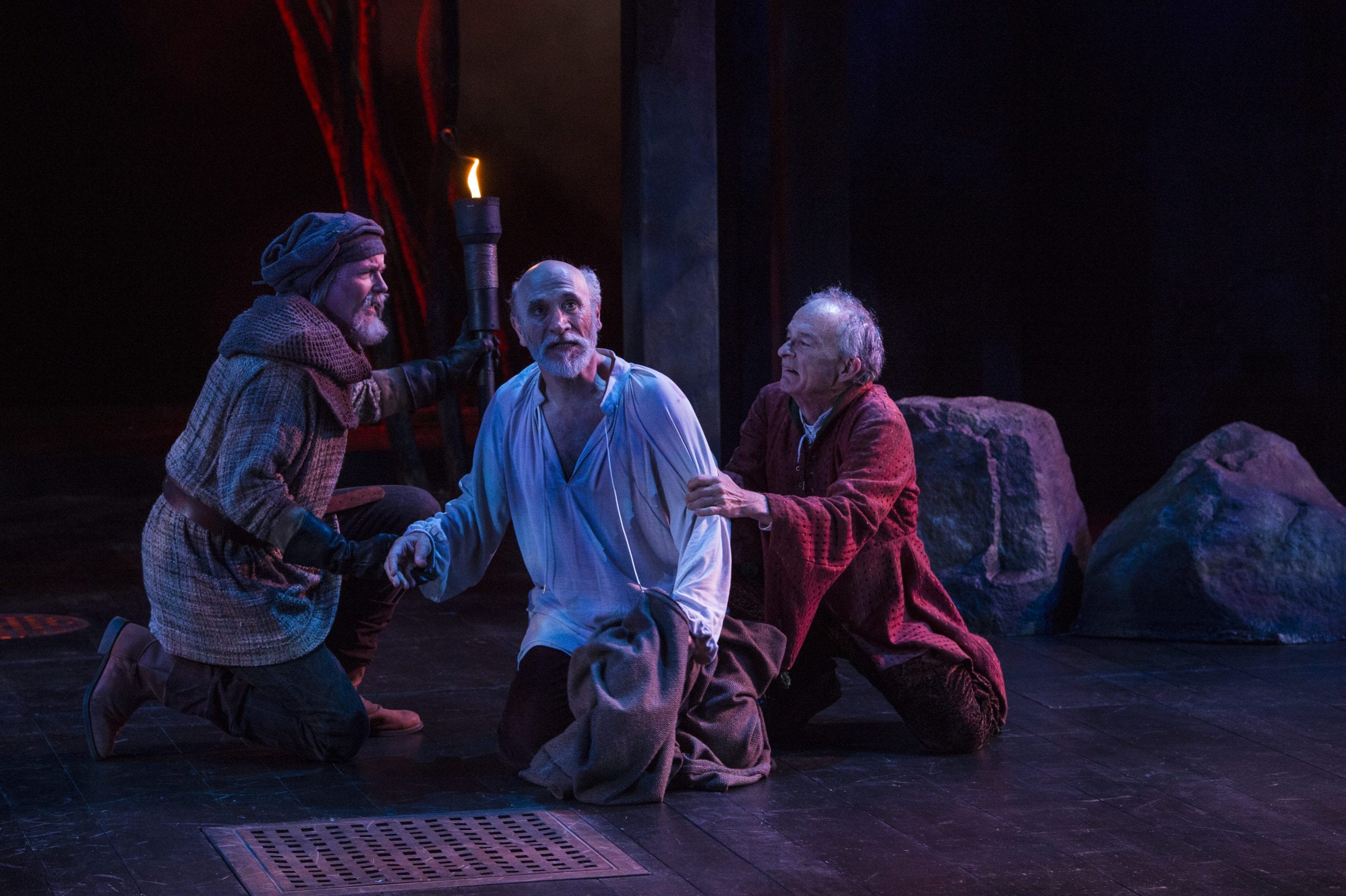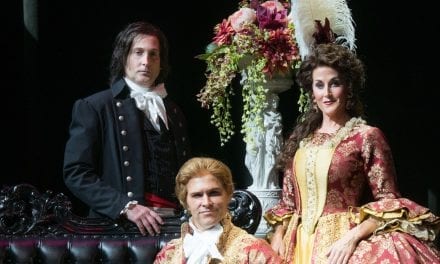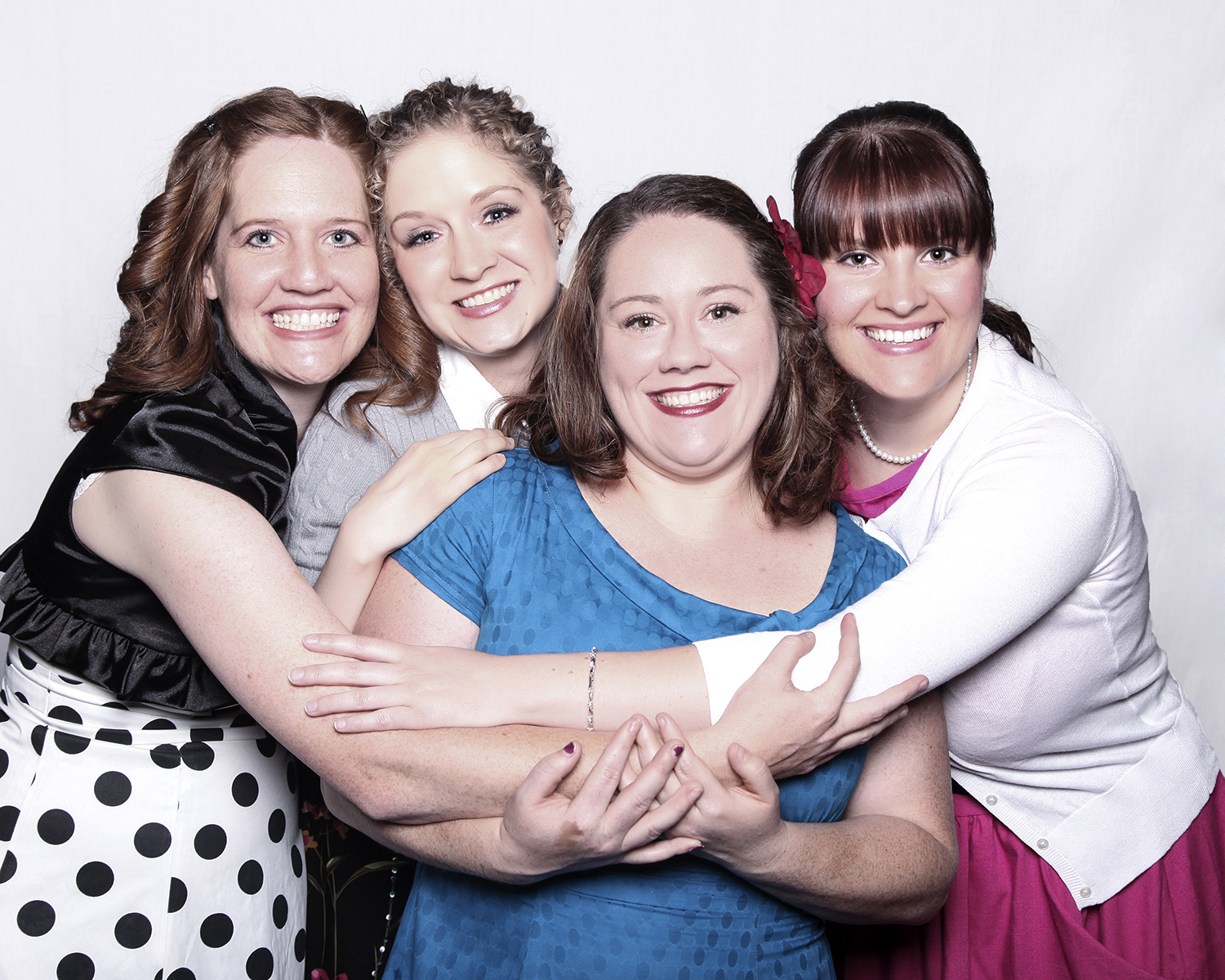SALT LAKE CITY — “I wish I could tell you about the South Pacific. The way it actually was. The endless ocean. The infinite specks of coral we called islands. Coconut palms nodding gracefully toward the ocean. Reefs upon which waves broke into spray, and inner lagoons, lovely beyond description. I wish I could tell you about the sweating jungle, the full moon rising behind the volcanoes, and the waiting. The waiting. The timeless, repetitive waiting.” – James A. Michner, Tales of the South Pacific
As I found my seat in the crowded Capitol Theatre, this text welcomed me to the world of South Pacific. Set in typewriter font, complete with blotted letters and yellowed curtain to hold it down, I was very quickly reminded that what I was seeing was something that made an impact in cultural history. Something that spoke of places to where most had never been. That bit of text, acting as a thin veil between the palms and beaches whose shadows were all I could get a hint of for the time being, was a reminder that magic was in store for the audience tonight.
The musical South Pacific, currently in its national tour stop in Salt Lake City, is based off of Michner’s Pulitzer winning novel. This play went on to win a Pulitzer and ten Tony Awards. It tells the story of the interactions between soldiers and local islanders during World War II. The central story line centers around Frenchman Emile de Becque, a man who came to the island at a young age to hide from his past; and Nellie Forbush, a U.S. Navy nurse from Arkansas who is quickly falling for Emile when the play opens. As they become closer, Emile reveals he has two mixed race children from a previous wife who was a native of the island, and Nellie has to choose whether to keep the ideas she had been brought up to hold, or stay with the man she loves. This is pretty heavy subject matter to deal with, considering that this musical came out in 1949, a time when the Civil Rights Movement was still years from emerging.
So how did this musical fare for a modern audience? The strength behind this musical lies in the relationships that are explored in the very historically-specific plot. This musical has some big numbers, but it’s not as flashy as others of the time. Even the ensemble is mostly comprised of vivid and lively characters that are hard to forget. These relationships were both the strength and weakness to this production. While some of the relationships felt so natural and alive, others fell flat and didn’t read.
Katie Reid as Nellie Forbush was wonderful. She really made me care about her choice, which is hard to achieve for a modern audience. I could see that her prejudices were not ill intentioned, but were a part of her life growing up and part of a world that I could see still called to her. However, her romantic opposite, Marcelo Guzzo, gave us an Emile de Becque who belonged in an opera rather than in this story. I understand the tradition of using an operatic voice for this character, but in all the recordings and films I researched to find a base for my opinions, the men who played Emile still felt like they belonged in the story because of the honesty of acting. Guzzo never felt connected to anyone in the scenes, and I felt like each time I saw him I was very aware I was watching an opera singer being an actor playing Emile. That isn’t to say his performances weren’t good. His singing was some of the most beautiful of the show. I just wished the style of his acting matched the rest of the cast.
Performances to be applauded were those of Shane Donovan (Cable), Christian Marriner (Luther Billis), and Cathy Foy-Mahi (Bloody Mary). Donovan gave a certain youthfulness to his portrayal that read as passionate and naïve, qualities which worked for me and made his story that much more tragic. Marriner, on the other hand, was hilarious as Billis. He really brought life to the production and was the character I found myself the most interested in watching, especially in scenes with Nellie, because of the honesty found in the humor. Foy-Mahi was a great Bloody Mary, and really balanced her comedy well. I really believed that her English was limited, and having worked with middle aged people trying to learn another language, I thought it was thoroughly entertaining to see this little woman shouting newly learned obscenities at her customers. I also found her performance of “Bali Ha’i” enchanting. Of all the songs, this is the one that made me feel the most like I was in a new land.
Another aspect that transported me during this production was the technical wizardry found in the orchestrations, and the lighting. There is nothing better than a good live orchestra. It brings the audience to a new level of intimacy and allows a production to breathe naturally. This orchestra, conducted by Richard Dunn II, was such a great asset to this production. The lighting, by Donald Holder, was equally important to this production. The beautiful washes of color made each scene feel sun bathed and atmospheric. I could feel the heat and hear the waves just by the lighting alone.
All in all, I liked this production. It made sense to me why the revival itself won so many awards. Though some of the acting was weaker than I expected from a national tour, this show shouldn’t be missed simply because of the story. Of all the shows that have come to the Capitol this season, South Pacific, in my opinion, has the most important message to tell its audience. Although some of the spark has been lost in this touring version, it still manages to grant the wish that Michner hoped for in the opening pages of his book in sharing with us the endless ocean, the rising moon, and the timeless waiting for a better tomorrow.







